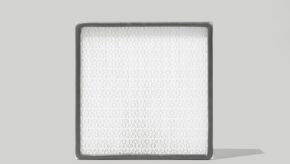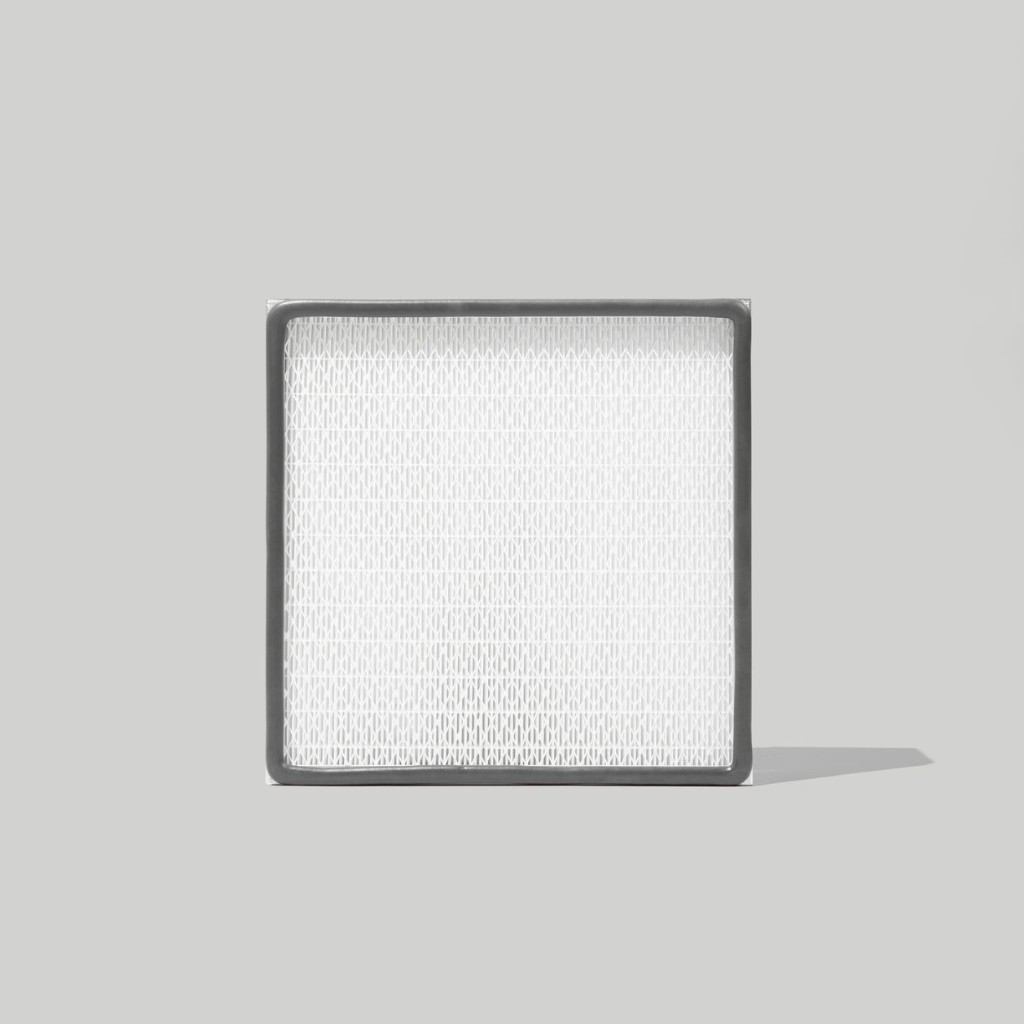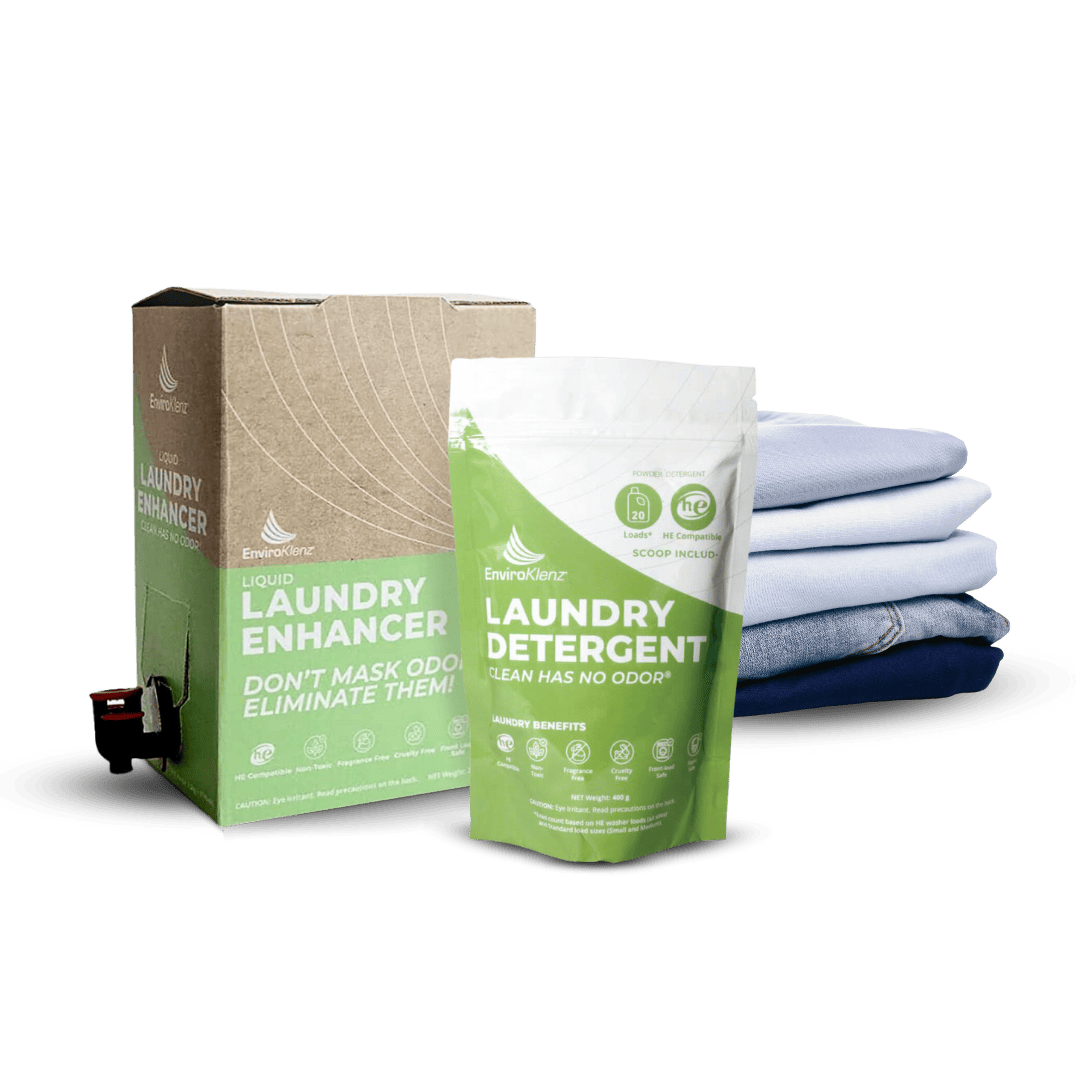Sleep naturally rejuvenates the body, but sleeping in an unhealthy, toxic environment that constantly exposes you to harmful chemicals can hinder rejuvenation. While many actively prevent contaminants like smoke and outdoor pollutants from entering their bedrooms, few are aware of the toxicity right inside their sleep sanctuary.
This comprehensive guide is for you if you’re looking for practical steps to implement healthy non-toxic living. We explore the various harmful chemicals common in most bedrooms and offer five implementable strategies to help you build a healthy bedroom.
Why a Healthy Bedroom Matters
It’s easy to assume that the air in our homes is cleaner than what we breathe outdoors, but that’s hardly the case. The United States Environmental Protection Agency (EPA) says air pollutants can be up to five times higher in most indoor spaces than what’s obtainable outdoors.
In other words, just because your home looks clean doesn’t necessarily mean it is contaminant-free. The items in your home, particularly those in the bedroom, like furniture, mattress, pillows, and carpet, can release potentially toxic gasses into the air. And because you spend a chunk of your day in the bedroom every night ― up to eight hours sleeping for many people ― you are exposed to these chemicals.
Considering the above, anyone looking to embrace and encourage non toxic living must take steps to reduce air pollution in their indoor environments, especially in the bedroom, where we are at our most vulnerable physical state.
Potentially Harmful Chemicals in Your Bedroom
To create a non-toxic sleep environment, you must become aware of certain harmful chemicals you may be exposed to right inside your home. Some potentially dangerous chemicals used in manufacturing many of the items found in and around the bedroom include:
Formaldehyde
Formaldehyde is a highly toxic compound used in manufacturing certain paints, furniture, mattresses, and bedding materials. Over time, items containing the compound will release toxic gas, which may cause eye and skin irritation in some people.
Polyurethane Foam
Many mattresses ― even those made by well-known brands ― contain polyurethane foam. Unfortunately, foams made from this polymer may irritate the eyes, inflame exposed skin, and cause respiratory problems in some people.
Chlorine
Chlorine is used in many conventional cleaning products, bleach, and disinfectants. Fumes from the chemical can irritate the eyes, throat, and respiratory system. But that’s not all. Chlorine may react with other chemicals to form potentially dangerous byproducts.
Flame Retardants
To meet fire safety regulations, some mattresses and bedding materials are treated with flame-retardant chemicals, like chlorinated tris and polybrominated diphenyl ethers (PBDEs). While this may sound like a good thing, flame-retardant chemicals have been linked to health concerns.
Stain and Water Repellents
Stain and water repellents are used in some bedding materials like mattress pads or mattress protectors. In many cases, these products are treated with perfluorinated compounds (PFCs), which may have health and environmental impacts.
Phthalates
Phthalates are not limited to plastics; they are also found in synthetic fragrances (think scented candles, fabric softeners, laundry detergents, and air fresheners). Unless you use organic alternatives, your personal care products probably have phthalates. And if your bedroom has vinyl flooring, there’s a high chance the floor contains phthalates.
Several studies link long-term phthalates exposure to hormone issues, obesity in children, and other serious health problems.
As you may have guessed, this is not an exhaustive list of the chemicals to watch out for. When choosing items for your bedroom or home, read labels and keep an eye out for other chemical ingredients like:
- Ammonia
- Sodium Hydroxide
- Triclosan
- Lead
- Benzene
Understandably, it may not be feasible to completely eradicate some of these chemicals or their sources, but you can take deliberate steps to significantly limit exposure to them. In the next section, we share small but effective ways to transform your bedroom into a serene and healthier environment.
How Toxic Gases Enter Our Sleep Environment
In many cases, pollutants in the bedroom usually come from the following common sources:
Gasses from new items
New carpets, curtains, and pieces of furniture may release potentially harmful gases. This process is known as off-gassing and contributes to indoor air pollution.
Chemical emissions
Similar to installing new items in the room, some existing items continuously emit toxic chemicals into the air, even though the emissions are in small quantities. Common examples include cabinets (made from pressed wood products), mattresses, pillows, and other bedding materials.
Mold and mildew
Water leaks, poor airflow or ventilation, and drying clothes indoors can increase the humidity level in your bedroom. Unfortunately, high humidity creates the perfect breeding ground for mold and mildew.
Pest control products
Insecticides and pesticides used in or around the bedroom can lead to indoor air pollution if not used properly.
Allergens
Dust mites (present in pet beds, rugs, carpets, and bedding), pet dander (resulting from shedding), pollen (from outdoor sources), and cockroach droppings can affect the air in the bedroom.
Household cleaning products
Most conventional laundry products, household cleaners, and even air fresheners can release toxic gases into the air.
Certain electronic devices
Using electronics in the bedroom may seem harmless, but devices and chargers that emit artificial electromagnetic fields (EMFs) may not be safe in your sleep sanctuary.
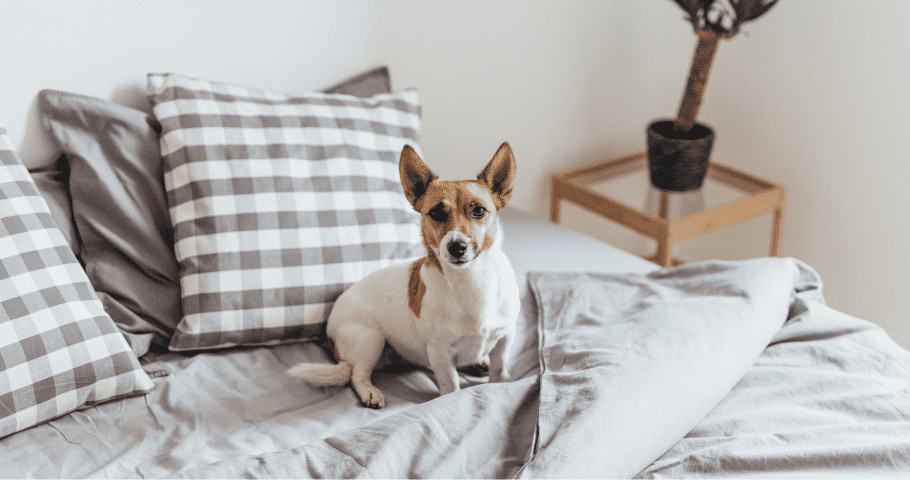
5 Practical Ways to Build a Healthy Bedroom
Transforming your bedroom into a healthier environment comes down to controlling the sources of toxicity. This may involve removing certain items or finding creative ways to control the gases they emit.
Here are 5 practical steps you can take right away to create a clean, healthy bedroom.
1. Improve Air Quality in Bedroom
First things first, tackle air pollution in your sleep environment. To be clear, achieving a 100% pollution-free bedroom is nearly impossible. However, there are several things you can do to improve the air quality in your sleep sanctuary and home as a whole.
In addition to removing the sources of pollutants from your bedroom, EPA recommends using air filtration systems to clean and improve the air quality in indoor spaces.
When choosing air filtration systems, look for products designed to filter tiny particles and capture and eliminate gases. The EnvironKlenz Air System Plus checks these boxes, providing you with the cleanest air possible.
2. Invest in a Non-Toxic Mattress
Mattresses are among the biggest source of toxicity in the bedroom, and switching them out can be a difficult decision, considering how expensive they can be. However, this is unavoidable if you’re looking to reduce your exposure to potentially dangerous chemicals and wholly embrace non-toxic living.
Opt for organic mattresses made with any of these materials:
- Organic cotton mattress: Mattresses made from organic cotton are safer because the cotton is not grown using synthetic fertilizers or harmful insecticides.
- Natural latex mattress: Although mattresses made from natural latex are usually more expensive, the material is resistant to mold, mildew, and dust mites, and it is breathable.
- Wool mattress: This material is hypoallergenic and naturally resistant to dust mites. Wool also contains natural properties that make it flame resistant.
Replacing your mattress can create a dent in your wallet, but the good news is that you can opt for a non-toxic mattress topper if you’re on a tight budget. Using sustainable bedding materials like a non-toxic mattress topper is a more affordable option, and they can protect your health until you can switch out your conventional mattress.
Whether you replace your conventional mattress or opt for a non-toxic mattress topper, ensure the material is certified organic or toxin-free. Look for certifications like the Global Organic Textile Standard (GOTS), EOKO-TEX, or Greenguard Gold Certificate.
3. Use Sustainable Bedding Materials
Like conventional mattresses, other bedding materials such as pillows, bed sheets, and duvets are often treated with toxic chemicals.
To create a safer, non-toxic bedroom, opt for natural bamboo or organic cotton fabrics, especially when choosing bed sheets and pillowcases. Wool is also a safer material, particularly suitable for duvets and comforters. Whatever material you choose, remember to look for organic certifications.
While we are still on the subject of sustainable bedding materials, it is important to be picky about the fabric-based items in your bedroom if you really want to embrace non-toxic living. From curtains to drapes and rugs, consciously choose bedroom textiles made with natural fibers. This way, you reduce toxicity in your sleep environment and improve your overall health.
4. Adopt Non-Toxic Cleaning Products
No doubt, many conventional cleaning products and laundry products are effective when it comes to removing dirt and stains, but they usually contain chemicals that may impact your health and the environment.
To fully embrace non toxic living, swap out conventional laundry and cleaning products, including your personal favorites! Look for gentle, plant-based laundry alternatives to clean your sheets and bedding materials. Also, choose non-toxic cleaning products for cleaning your bedroom windows, floors, and walls.
Opt for reusable mop pads or microfiber cloths when mopping floors, dusting, or vacuuming your sleeping space. And lastly, remember to let in some fresh air during and after cleaning to improve the air quality in your bedroom.
5. Use Non-Toxic Paint
This one requires a bit of work if you’re already living in your home for a while because it would mean moving out everything in the bedroom or properly covering them up. However, whether moving into a new home or making a decorative improvement, always use non-toxic paint.
Avoid traditional paints as they contain high levels of volatile organic compounds (VOCs), which off-gas into the air and cause pollution. Opt for no-VOC paints for a fully non-toxic bedroom with better air quality.
Here’s something else to keep in mind about low-VOC paints. While they contain lower levels of VOCs, they still emit some VOCs into the air. For a fully non-toxic bedroom, choosing paints that are entirely VOC-free is best.
Also, watch for certifications from eco-friendly labeling programs like Green Seal and Cradle to Cradle Certified. Besides being VOC-free, paint products with these certifications usually do not contain other ingredients that are potentially harmful to human health and the environment.
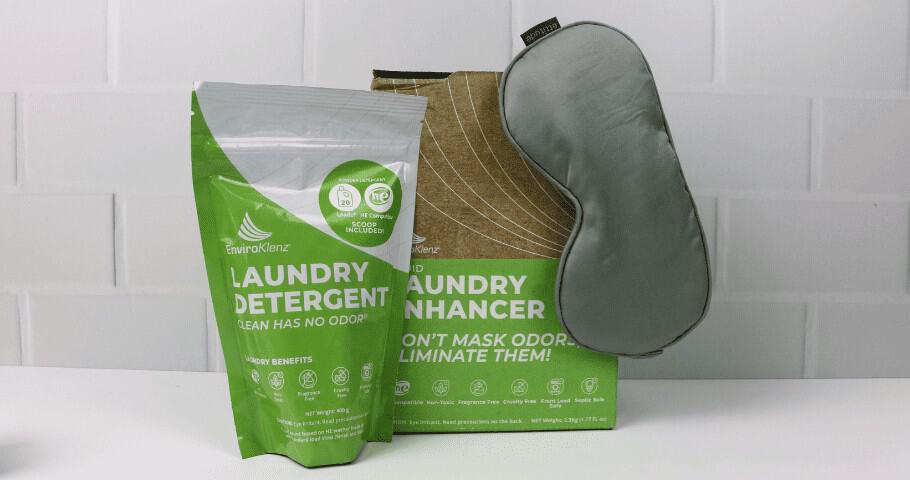
Why Choose EnviroKlenz Laundry Products?
EnviroKlenz is a trusted name when it comes to providing non-toxic laundry products, as well as solutions for improving indoor air quality.
Using our earth-based odor-eliminating technology, we formulate a wide range of safe laundry detergents that are highly effective at removing stains and fighting odors without compromising indoor air quality.
Unlike conventional options, our laundry products do not mask odors nor contain synthetic fragrance or artificial scents. Many of our customers rate our products very highly, and the reason is simple: our laundry products do not contain harmful chemicals or toxic ingredients.
One of our many satisfied customers with chemical sensitivities says our laundry products “make living in a toxic world possible.” Another happy customer says our laundry enhancer liquid detergent “is the ONLY thing that took the raunchy dye smell out of black Jeans.” And the outstanding result was just after the first wash!
If you’re looking to create a healthy bedroom environment free of fumes from laundry products, check out our laundry supplies.
EnviroKlenz® Medical Disclaimer:
“Any information that is provided on this website is not for the use by any commercial or personal entity without expressed written consent of the blog author. The material and statements illustrated within this blog are not intended to diagnose, treat, cure, or prevent any diseases or medical conditions. Nor does the author in any way guarantee or validate the validity, totality, or efficacy of any claims and will therefore not be held responsible for the content of any claims. Always consult your medical physician for any specific medical advice or recommendations.”

